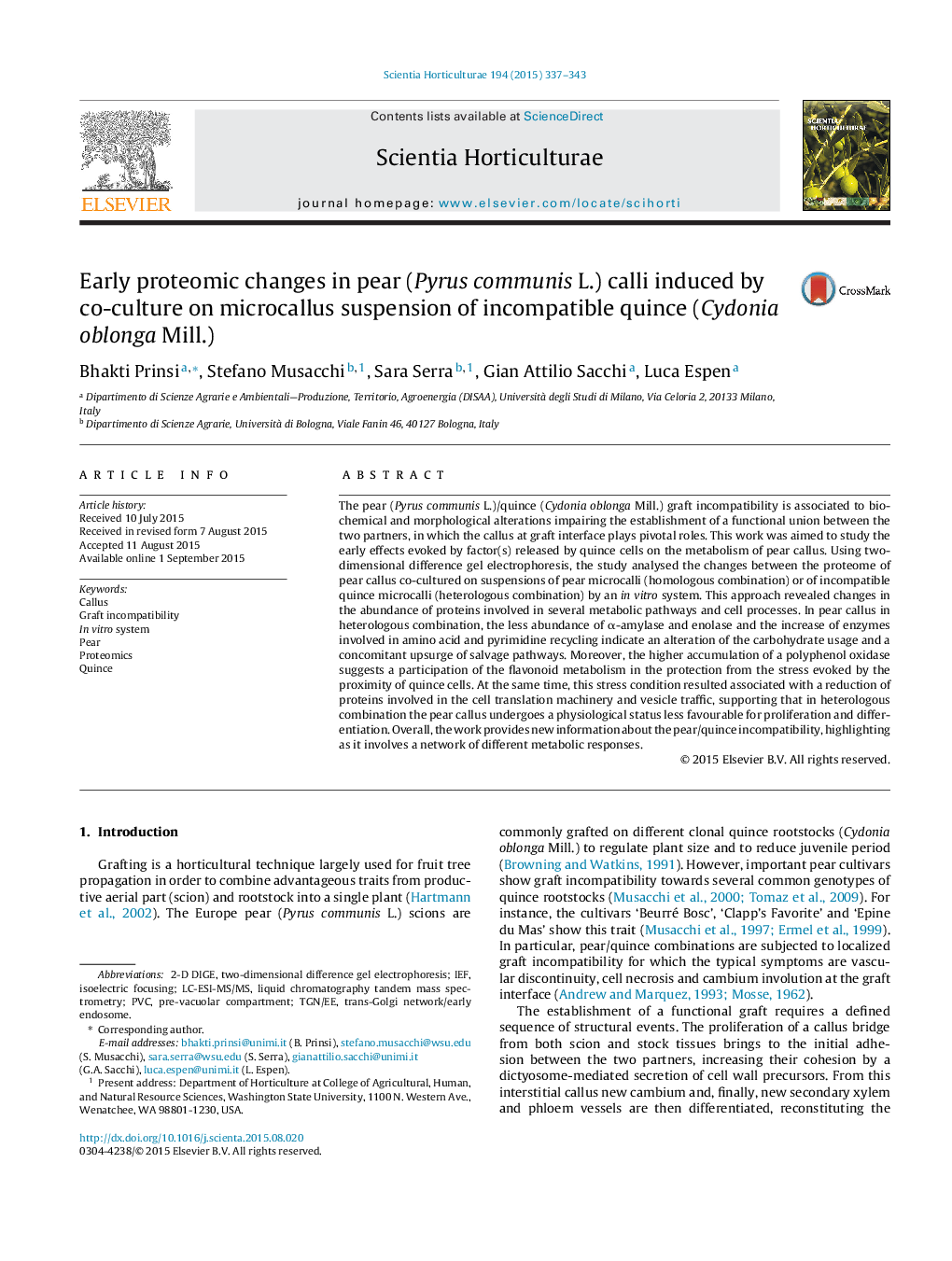| کد مقاله | کد نشریه | سال انتشار | مقاله انگلیسی | نسخه تمام متن |
|---|---|---|---|---|
| 4566350 | 1628804 | 2015 | 7 صفحه PDF | دانلود رایگان |

• 2-D DIGE of pear calli (B) in vitro grown on pear or quince (EMC) cell suspensions.
• Proteomic differences between B/EMC and B/B involve C, N and pyrimidine metabolisms.
• Polyphenol oxidase is more abundant in pear callus in B/EMC respect than B/B.
• Protein synthesis and vesicle traffic seem to change between calli of B/B and B/EMC.
• Pear/quince graft incompatibility seems to be related to early proteomic changes.
The pear (Pyrus communis L.)/quince (Cydonia oblonga Mill.) graft incompatibility is associated to biochemical and morphological alterations impairing the establishment of a functional union between the two partners, in which the callus at graft interface plays pivotal roles. This work was aimed to study the early effects evoked by factor(s) released by quince cells on the metabolism of pear callus. Using two-dimensional difference gel electrophoresis, the study analysed the changes between the proteome of pear callus co-cultured on suspensions of pear microcalli (homologous combination) or of incompatible quince microcalli (heterologous combination) by an in vitro system. This approach revealed changes in the abundance of proteins involved in several metabolic pathways and cell processes. In pear callus in heterologous combination, the less abundance of α-amylase and enolase and the increase of enzymes involved in amino acid and pyrimidine recycling indicate an alteration of the carbohydrate usage and a concomitant upsurge of salvage pathways. Moreover, the higher accumulation of a polyphenol oxidase suggests a participation of the flavonoid metabolism in the protection from the stress evoked by the proximity of quince cells. At the same time, this stress condition resulted associated with a reduction of proteins involved in the cell translation machinery and vesicle traffic, supporting that in heterologous combination the pear callus undergoes a physiological status less favourable for proliferation and differentiation. Overall, the work provides new information about the pear/quince incompatibility, highlighting as it involves a network of different metabolic responses.
Figure optionsDownload as PowerPoint slide
Journal: Scientia Horticulturae - Volume 194, 14 October 2015, Pages 337–343